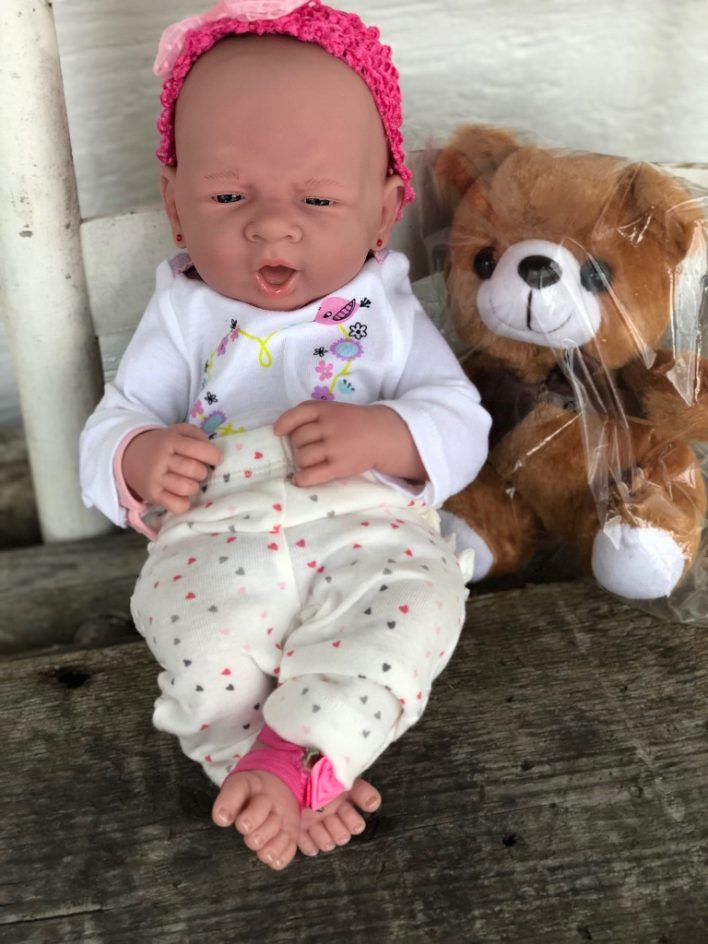
Tomorrow I’m bring a “Realistic Baby,” as yet unnamed, to the Mansion to ease some of the anxiety and confusion she has been experiencing. Several of the aides have recommended it for her, and asked me if I could help, and i think I found a good one.
These dolls are extremely human like, in looks and touch, they range in price fro $59 to more than $1,000. The one I got cost $200. It is simple and feels like a baby and has toys, diapers and even her own stuffed bear. I have permission to write about it and use the residents name, but I want to wait first and see if it is something she wants and is drawn to.
This week I am also bringing two “activity” aprons to Mansion residents with some memory issues, the aprons go into their laps and they can feel, touch and manipulate buttons and compartments and fabrics. But first, the Realistic Baby.
I first saw a “Realistic Baby” three or four years ago when Red and I began our therapy work in a Manchester, Vt., assisted care facility, it was much richer and more lavish than the Mansion, the facility was divided into apartments and had plush carpets and open and airy rooms.
Mary was one of the residents Red and I visited, and she had dementia, I believe, she rarely spoke.
When we met her I saw that she was holding a small baby, so realistic I took it to be human, until I got close. The skin was soft like a babies, and could give her baby water, and it came out into the diapers she kept to change her. Mary gave her baby a bottle regularly, and the staff said the baby had been instrumental in calming Mary, giving her an outlet for love and nature, and making her feel needed and engaged.
She was always with the baby, and held and spoke to it.
Over these past few years I saw about a half-dozen babies, and each time I see one, it is more and more realistic.
Like almost everything in America, the Realistic Babies – they are never called dolls – are sometimes controversial. Although elder care staffers believe they reduce anxiety and calm patients with memory loss, the families of the residents sometimes find them patronizing or demeaning.
I have seen how much these dolls can mean to elderly people with severe memory loss, and I have doubt that they provide love and comfort and a sense of being needed and useful.
But it is difficult for a son or daughter to see their mothers holding a baby and loving it intensely, and sometimes they object. There is a protocol about introducing a Realistic Baby to an elderly resident or patient.
The doll is not ever forced in the patient, it is shown to them and it is up to them to reach out to it and want to hold it. Some do, some don’t.
Realistic babies usually do not cry out, as that can be upsetting to the patients. Some of the new Realistic Babies have electronic heartbeats, but they require replacement batteries and it can be frightening to people if the heart stops. I didn’t choose that option. The baby I got can wet herself, and I got a box of diapers to go with her.
There has only been one known study of the impact of Realistic babies on seniors, and it was in 2007 and was positive, it found that the doll gave the baby’s owner a task, a sense of responsibility and engagement, it usually provoked soothing and happy memories, and it seemed to be comforting.
To me, what is important is the resident’s response. If this is something they will love and nurture, it feels right to me. Let them decide. And if that is not the case, they will simply reject it and turn away. I have no idea what will happen tomorrow.
So we’ll see. I’ll share this experience with you, of course.
